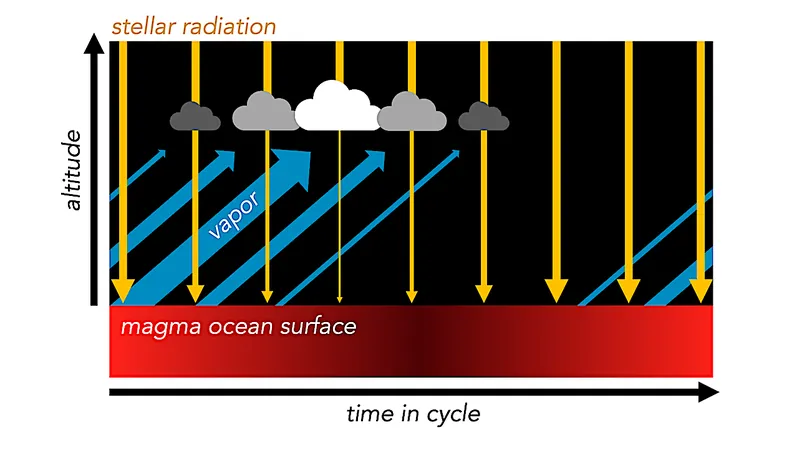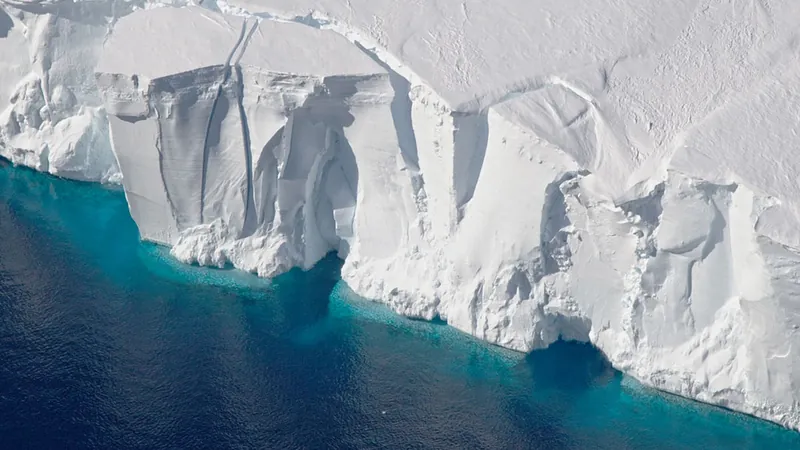
Unraveling the Climate Mysteries of 55 Cancri e: The Role of Magma Temperatures
2024-09-26
Introduction
The rocky exoplanet 55 Cancri e, known for its extreme temperatures and swift orbital period, has long puzzled astronomers due to unexpected fluctuations in its dayside infrared radiation, which vary drastically—by as much as six times—over just a few days. Researchers have set out to decode these enigmatic weather patterns, and the key may lie in the planet's surface magma temperatures.
Proposed Feedback Mechanism
In a novel feedback mechanism proposed by scientists, the interplay between reflective clouds and surface magma could explain the planet's dramatic climatic shifts. As magma temperatures increase during periods of low cloud cover, the surface heats up, releasing silicate vapor into the atmosphere. This vapor condenses to form reflective clouds that subsequently cool the surface, creating a cyclical pattern between cloud formation and magma temperature.
Observational Evidence
This oscillation can lead to significant variations in both thermal radiation emitted by the planet and the reflection of stellar light, resulting in noticeable changes in secondary eclipse depths at various wavelengths. Excitingly, recent data from the James Webb Space Telescope (JWST) supports these findings, showing that different wavelengths can oscillate out of sync, a phenomenon aligned with the researchers' theories.
Implications for Exoplanet Research
The implications of this research reach far beyond mere curiosity. Understanding the ocean-atmosphere dynamics on 55 Cancri e could provide groundbreaking insights into the composition and evolution of rocky planet atmospheres, especially in terms of how they retain volatiles essential for the potential for life.
Conclusion
As astronomers turn their gaze back to 55 Cancri e with renewed intrigue, they are developing observational strategies to test this feedback mechanism further. If proven, it could revolutionize our understanding of similar exoplanets, transforming our perspective on rocky worlds in the cosmos. Stay tuned as we continue to unravel the climate dilemmas of distant planets and the secrets they hold for the evolution of life in the universe!




 Brasil (PT)
Brasil (PT)
 Canada (EN)
Canada (EN)
 Chile (ES)
Chile (ES)
 España (ES)
España (ES)
 France (FR)
France (FR)
 Hong Kong (EN)
Hong Kong (EN)
 Italia (IT)
Italia (IT)
 日本 (JA)
日本 (JA)
 Magyarország (HU)
Magyarország (HU)
 Norge (NO)
Norge (NO)
 Polska (PL)
Polska (PL)
 Schweiz (DE)
Schweiz (DE)
 Singapore (EN)
Singapore (EN)
 Sverige (SV)
Sverige (SV)
 Suomi (FI)
Suomi (FI)
 Türkiye (TR)
Türkiye (TR)